Rice Mill Machine at Aoki Brewery
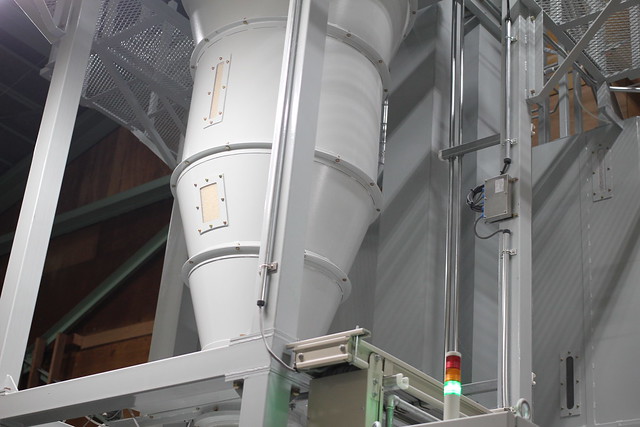 During our visit to Aoki Brewery in Niigata, we were told that the three most important factors of brewing sake is the rice, the water and the people. The rice that breweries use for sake-making are not the usual grains you find at the grocery store -- they use special rice strains like Yamadanishiki, Koshitanrei, Ohmachi, Gohyakumangoku and Miyamanishiki. Before prepping the rice for steaming like you saw in Yoko's report, an important step in sake-making is milling each rice grain down. Depending on the sake, the percentage of the the rice being milled down will vary. Here's a quick chart made by Yoko of the different types of sakes and its individual semaibuai (the word for how much the rice has been milled down):
During our visit to Aoki Brewery in Niigata, we were told that the three most important factors of brewing sake is the rice, the water and the people. The rice that breweries use for sake-making are not the usual grains you find at the grocery store -- they use special rice strains like Yamadanishiki, Koshitanrei, Ohmachi, Gohyakumangoku and Miyamanishiki. Before prepping the rice for steaming like you saw in Yoko's report, an important step in sake-making is milling each rice grain down. Depending on the sake, the percentage of the the rice being milled down will vary. Here's a quick chart made by Yoko of the different types of sakes and its individual semaibuai (the word for how much the rice has been milled down):| HONJOZO SAKE TYPES | JUNMAI SAKE TYPES |
DAIGINJO Seimaibuai 50% or less Aromatic, delicate, fine, highest-quality | JUNMAI DAIGINJO Seimaibuai 50% or less Rice sake and water only, delicate, fine, highest-quality |
GINJO Seimaibuai 60% or less Aromatic, clean, light, higher-quality | JUNMAI GINJO Seimaibuai 60% or less Rice sake and water only, clean, light, higher-quality |
HONJOZO Traditionally, a seimaibuai 70% or less Aromatic, smooth, high quality | JUNMAI Traditionally, a seimaibuai 70% or less Rice sake and water only, smooth, high quality |
Now, I have no idea how they used to mill the rice down back in the day before machines. Did they slice each grain of rice with a knife by hand??? Thank god for technology -- we were lucky enough to sneak into the warehouse of Aoki Brewery to see their very high-tech rice milling machine!
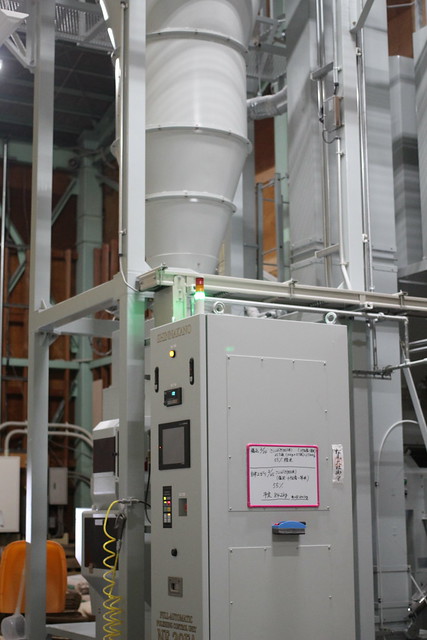 Like Aoki's top-of-the-line machine to control the temperature for the rice mash mash before brewing the sake, this rice mill must have been able to put down payments on at least TWO homes. It was huge!
Like Aoki's top-of-the-line machine to control the temperature for the rice mash mash before brewing the sake, this rice mill must have been able to put down payments on at least TWO homes. It was huge!  The rice goes up a tube and flies around in a flurry in this cone-shaped contraption. The inside of this is lined with stone, and rice is milled downslowly over time to the desired semaibuai.
The rice goes up a tube and flies around in a flurry in this cone-shaped contraption. The inside of this is lined with stone, and rice is milled downslowly over time to the desired semaibuai. 
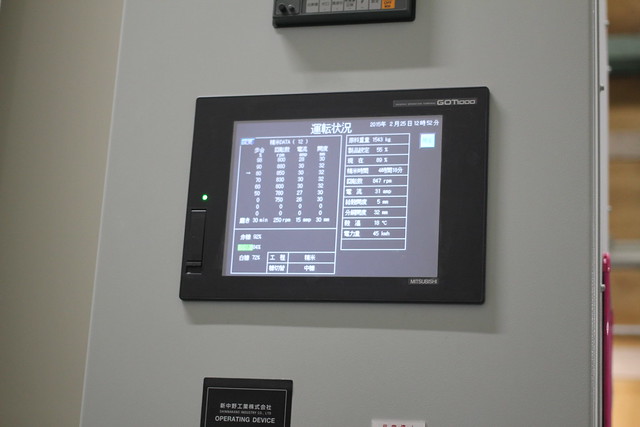 Rice mill master Masato Yagi gave us a tour of the facilities and machines.
Rice mill master Masato Yagi gave us a tour of the facilities and machines.  On this day, they were milling a rice called Koshiibuki down to 55% semaibuai. To get down to 55% (rice for a Ginjo sake), Yagi-san said it would take about ONE WEEK for the rice to fly around in the machine.
On this day, they were milling a rice called Koshiibuki down to 55% semaibuai. To get down to 55% (rice for a Ginjo sake), Yagi-san said it would take about ONE WEEK for the rice to fly around in the machine.  In comparison, Mr. Yagi told us that it would take about 24 hours to mill rice down to 70% (for Junmai sake). As you can imagine there must have been thousands of pounds of rice in this warehouse.
In comparison, Mr. Yagi told us that it would take about 24 hours to mill rice down to 70% (for Junmai sake). As you can imagine there must have been thousands of pounds of rice in this warehouse. 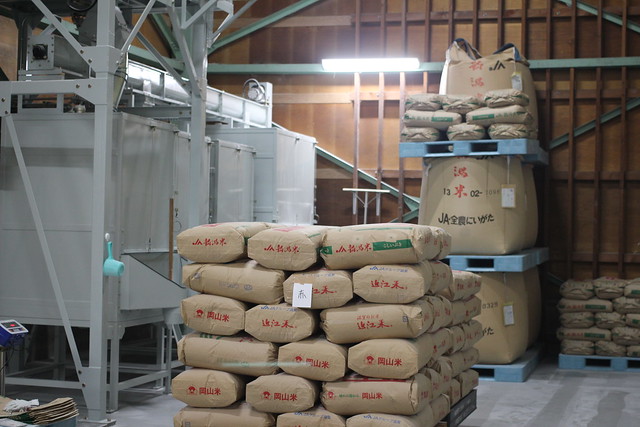 Rice before milling:
Rice before milling:  Rice after milling (sorry for the blur):
Rice after milling (sorry for the blur):  Amazingly, there is little waste for Aoki Brewery and sake making. After all the rice is milled, the remains of the rice comes out as a powder, which is then sold to companies to make senbei (rice crackers) and mochi.
Amazingly, there is little waste for Aoki Brewery and sake making. After all the rice is milled, the remains of the rice comes out as a powder, which is then sold to companies to make senbei (rice crackers) and mochi. 
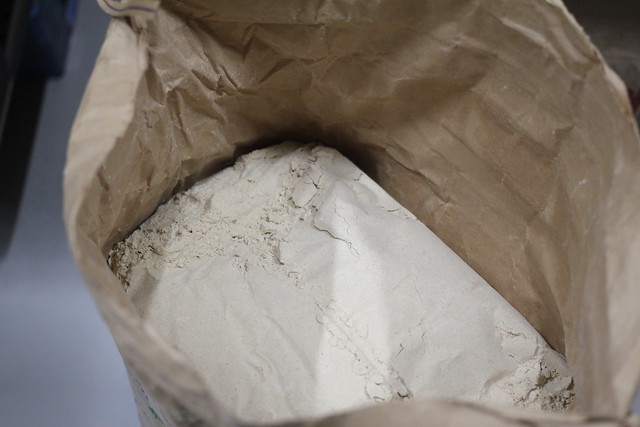
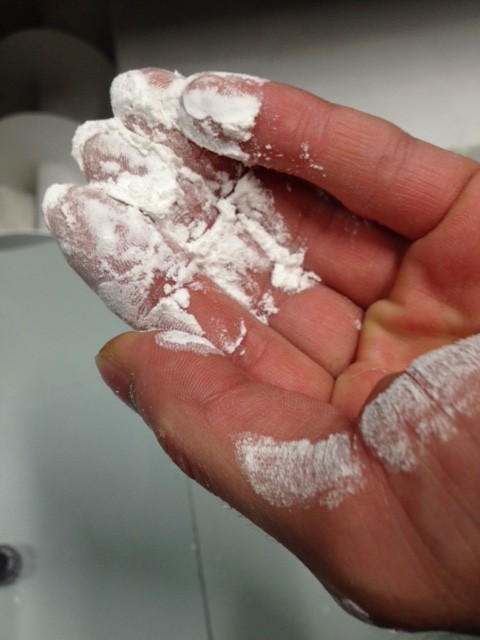 The more lower grade rice powder (say, rice that had only been milled down to 70%; so the remains would be closer to the husk) are sold to farms to use as animal feed. It is all so sustainable!
The more lower grade rice powder (say, rice that had only been milled down to 70%; so the remains would be closer to the husk) are sold to farms to use as animal feed. It is all so sustainable!  Thank you Mr. Yagi and Aoki Brewery for giving us a tour of your super modern facilities. It was all so impressive!
Thank you Mr. Yagi and Aoki Brewery for giving us a tour of your super modern facilities. It was all so impressive!
